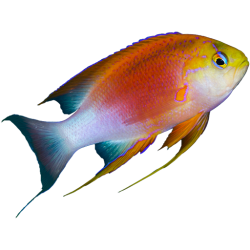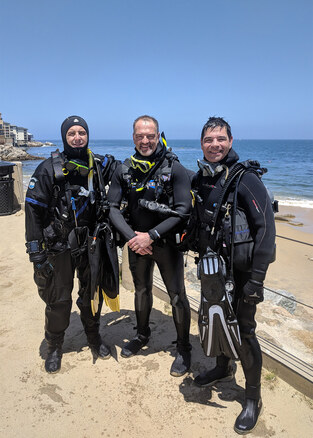
I guide small groups (maximum 4 divers) on two tank adventures in Monterey. I can take you to a range of local dive sites based on your skill and comfort level.
Ready to get started? View current rates or send me e-mail at scuba@spanglers.com to make a reservation.
Want to expand your skills? Add Adventure Dive training to your guided dives.
Don't like surface swims, or want to explore farther out? I now rent DPVs! Try the DPV Adventure Dive, or take the full DPV Diver course.
Save time at the beach! Download the Guided Dive Waiver and fill it out ahead of time.
Please note that I reserve the right to refuse to take someone diving or to stop a dive in progress if I deem there could be a danger to anyone’s safety.
Locations
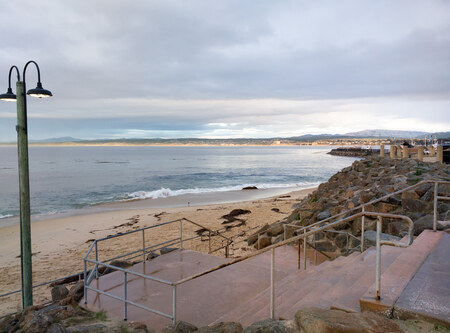
East Beaches
These all have easy shore entry, and a variety of underwater terrain from reefs to rock walls to pier pilings. They're protected from the usual northwest swell, so are diveable year-round. Dives are shallower; most dives are above 50'.
San Carlos Beach: One of the best beaches on the east side. There are lots of nudibranchs on the rock wall of the breakwater. Mid-reef has kelp forest, with lots of crabs and fish. I like to go out the big pipe to the metridium fields - giant white anemones the size of your forearm. You may have done your open water training dives here, but there's a lot more to see.
Monterey State Beach: A gently sloping beach. I usually dive the Sailboat on the first dive; this is one of the only wrecks in the area. The second dive is along the pilings of the municipal wharf; there are lots of crabs and sea snails, and every piling is its own mini ecosystem.
McAbee Beach: About halfway between San Carlos Beach and the aquarium. A mix of shale and sand. Herman the Seal has been known to play with divers' fins.
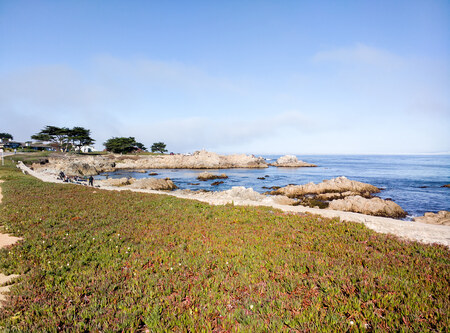
North Beaches
These are a bit more exposed beaches to the north and northwest. Dives are still shallow, above 50'. Entry and exit can be challenging if the northwest swell is kicking up, so these are a little more challenging than the east beaches (but still no more than moderate difficulty).
Lovers Point: This is actually two sites. I like to dive Lovers #3. We can head around to the northeast around the point, through a series of sand-floored shale canyons. There are lots of sandcastle worms. This is a good spot to look for bat rays and skates. I also like to swim across one of the densest sand dollar beds you've ever seen over towards Otter Cove. Entry is down stairs and across some boulders to a sand beach.
Coral Street: Swim over shale covered in sea grasses to mixed sand and rocks. This has somewhat different sea life than the other beaches, due to the sea grasses and greater exposure to waves and currents.
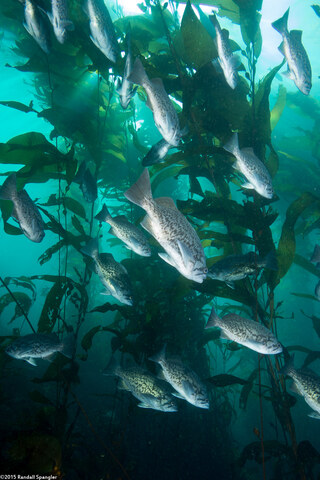
Point Lobos
Point Lobos is a spectacular dive site, with the best kelp forest in the area. Entry is an easy walk down a ramp from the parking lot at Whaler's Cove. The cove itself is shallow, with kelp growing from patches of rock mixed with sand. Mid-reef has an amazing array of life on its rocks. A bit farther out, Granite Point Wall has all sorts of ledges and small caves that harbor bigger fish.
If we go out to the end of mid-reef or Granite Point we can potentially get down to 100', but most of the time we'll be above 50'.
Guided diving at Point Lobos is limited to one dive team a day. During summer months, guided dives are limited to weekdays, due to limited parking. This uses a different process to make reservations than the website used for recreational dive teams, so don't make your own reservation. I'll also need to confirm with State Parks that the date is available, so it's best to plan trips to Point Lobos at least 3 weeks ahead of time.
Professional guides must have a State Parks Vendor Permit and pay event fees (I do, which is why guided dives at Point Lobos cost more than at other sites). The park rangers know all the guides, so it's risky to pay a guide under the table.
I also enjoy diving here for fun, and I may be able to join an experienced diver or group if you have an extra spot and are looking for a last-minute buddy. In this case I can't accept compensation to offset the expense of driving down and tank fills. If I'm diving for fun, I'll be bringing my big camera, and planning two 60+ minute dives. Bonus points if we carpool from the Bay Area.
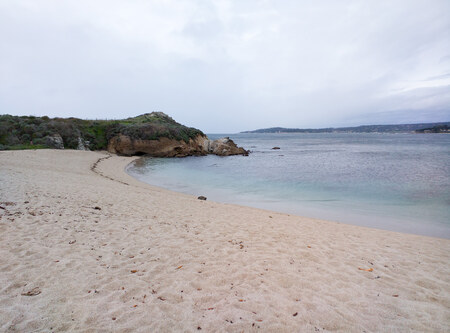
Monastery Beach
Monastery Beach is an exposed northwest-facing beach with a steeper slope down into the water. It's often not diveable due to waves, but when it is, it's got some of the best visibility in the area. South Monastery has a kelp forest and shale going down to the sand, and is a great place to see abalone. North Monastery is more exposed rock going down all the way into the mile-deep underwater Monterey Canyon (we will not go that deep). I teach the Deep Diving specialty here. This is a more advanced dive, due to the slope of the beach and potentially deep dives. It's also one you want to dive the first time with an experienced guide.
Monastery Beach is part of Carmel River State Beach. As with Point Lobos, guides must have a State Parks Vendor Permit and pay an event fee.
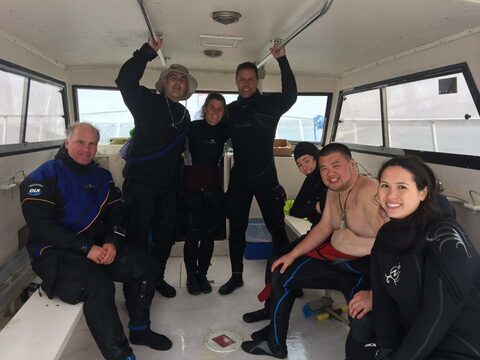
Boat Diving
We'll meet at K Dock and do two boat dives from one of the local dive boats (Beachhopper II, Escapade, Sanctuary, etc.) Many of the best sites like Hopkins Deep and the pinnacles around Carmel are only reachable by boat. Dives can be deeper; the first dive can be down to 80-100'. The captains are great about picking a site that everyone on the boat can dive, so we have some flexibility if you'd like an easier site.
Note that unlike tropical dives, local boats do not provide their own guides; they just describe the dive site and make sure you have a buddy. If you don't arrange for a guide, you and your buddy are on your own.
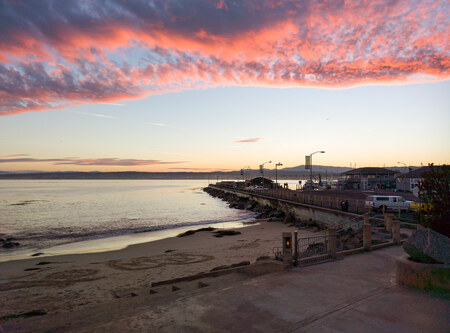
Night Diving
A whole different world of critters comes out at night. See octopus, phosphorescent algae, shrimp, and more.
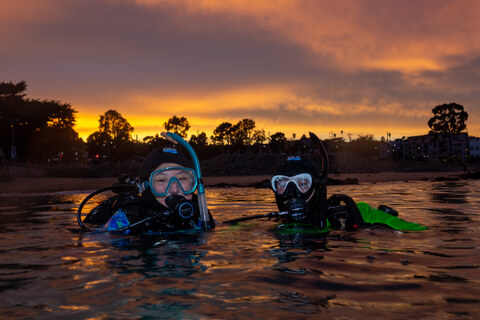
Frequently Asked Questions
What's a day of diving look like?
Our schedule is flexible because I only take small groups, but to give you an idea:
- 8:00 am - Meet at beach for paperwork and dive briefing.
- 9:00 am - Dive #1
- 10:30 am - Talk about what we saw on the first dive.
- 11:30 am - Dive #2
- 1:00 pm - Talk about what we saw on the second dive. Stamp logbooks (I've got a pretty stamp).
Where can I rent gear and tanks?
- If you're staying in Monterey, there are a number of shops including Aquarius, Monterey Bay Scuba, and Bamboo Reef which all do daily rentals.
- For weekend dives, get there by 7:00 am to pick up tanks, but renting gear often takes a long time and can make you miss the first dive.
- For weekday dives, you may need to pick up your gear the evening before, since the shops don't open until 9:00 am on weekdays and we meet at 8:00 am.
- If you're coming from the Bay Area, Any Water Sports does 4-day rentals.
- In summer months, shops can run out of some sizes of gear and tanks. Contact the shop to make a reservation.
- Make sure you test-assemble your gear at the shop to make sure it all works before you leave (regs breathe ok and don't free-flow, BCD buckles all work, dump valves don't leak, etc.). Some sites like Point Lobos are an hour drive round-trip from a dive shop, and by the time you get back with replacement gear there might not be parking.
What should I bring?
- Exposure protection (2-piece 7mm wetsuit, 8/7 semi-dry, or dry suit and undergarments), hood, gloves, boots
- Fins, mask, and snorkel. Yes, you do want a snorkel. We'll be surface swimming and you'll see more stuff and won't get caught in kelp.
- BCD and regulator
- Weights. If you tend to be floaty-feeted, a weight belt can help with that.
- Two tanks. I recommend renting steel tanks, if possible. Steel HP100s are shorter than aluminum 80s. Steel HP80s are shorter than aluminum 63s. In both cases, you get 20% more air, and you can use about 6 pounds less lead than if you used an aluminum tank.
- Dive lights are handy during the day and essential at night. I have a couple for rent.
- A surface marker buoy (SMB) is handy, particularly if we're diving off boats. I always carry one.
- A camera, if you're into underwater photography
- Towel, hat, and something to drink between dives
- Sunblock, if you tend to burn easily. Make sure it's reef-safe mineral sunblock.
What are your small groups like?
I take a maximum of 4 divers at a time.* That's a buddy team to my left, and one to my right. That way everyone gets to see everything, even the small stuff.
I only mix divers of similar skill level. If you're a new diver, it can be uncomfortable trying to keep up with someone who wants to swim far and deep. If you're an experienced diver, you don't want to get stuck with a new diver who's going to go through their air in 30 minutes. If you're crazy about nudibranchs, you want to go slow. If you're looking for rays, you want to cover a lot of ground. So, I keep those groups separate. It's more important for everyone to have a good time than for me to take as many divers as I can in each group.
If you want a guaranteed private dive, I can do that too. That's a good option if you're really new and may need some extra help with buoyancy, or if you're a photographer looking for a particular subject.
*If there are more than 4 of you coming down together to dive, I can accommodate you in a number of ways, from taking out sub-groups to bringing along a divemaster. I just don't normally group more than 4 people together who don't already know each other.
